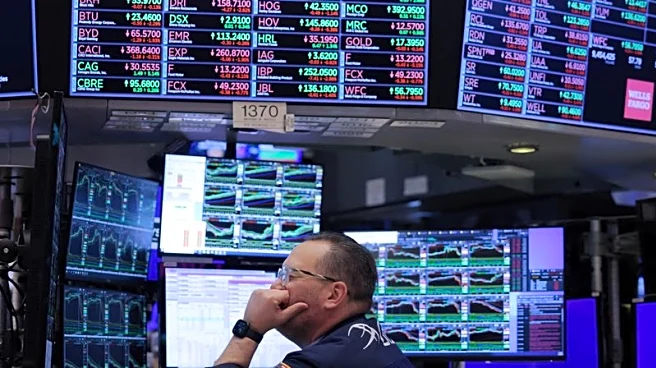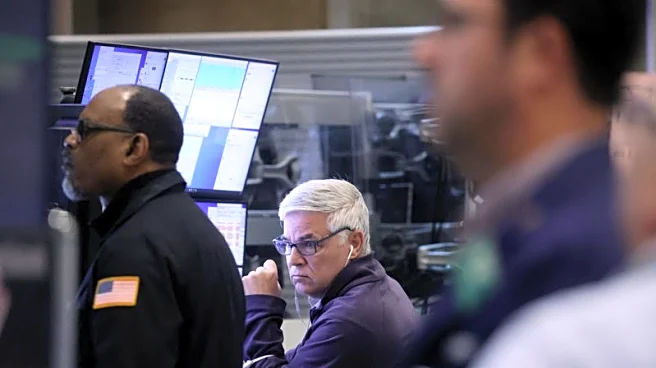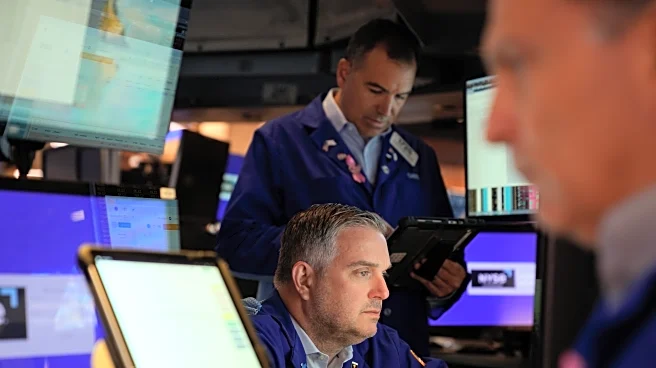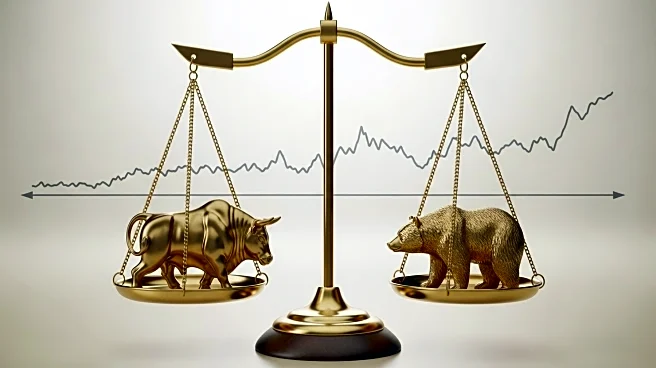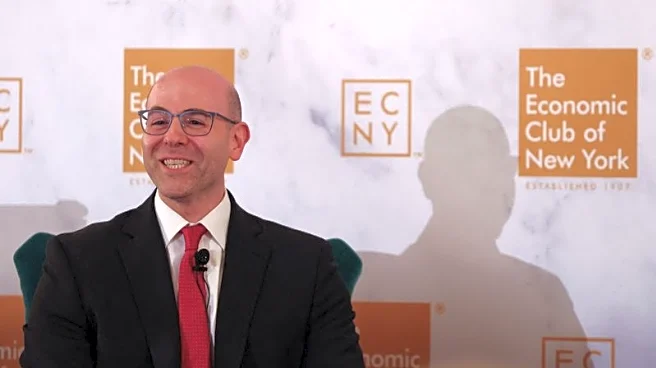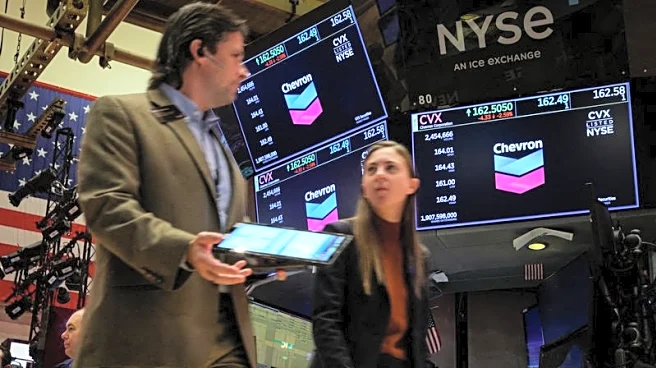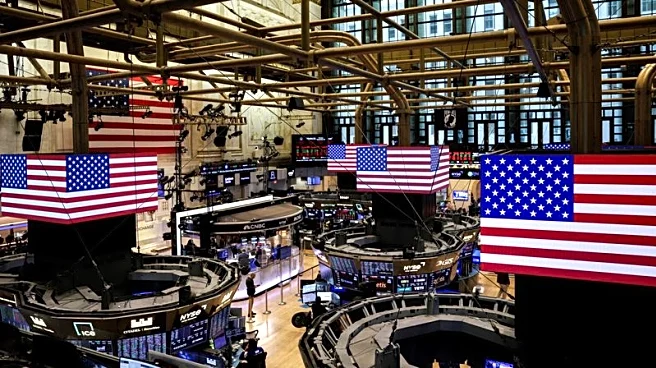What's Happening?
Wall Street is poised to open slightly higher as investors await cues from the Federal Reserve regarding potential interest rate cuts. The anticipation follows reports suggesting a weakening job market, which have led traders to expect a 25 basis point rate cut at the Fed's upcoming meeting. These reports, while less significant than official data like nonfarm payrolls, are considered crucial due to the data gap caused by the ongoing government shutdown. The Federal Reserve's decision is expected to be influenced by the softening labor market, providing justification for further policy rate reductions. Key figures such as Fed Vice Chair for Supervision Michelle Bowman, Atlanta Fed President Raphael Bostic, Fed Governor Stephen Miran, and Minneapolis Fed President Neel Kashkari are scheduled to speak, potentially offering insights into the Fed's policy direction.
Why It's Important?
The potential interest rate cut by the Federal Reserve is significant as it could impact various sectors of the U.S. economy. Lower interest rates generally encourage borrowing and investment, which can stimulate economic growth. However, they also reflect concerns about economic slowdown, particularly in the labor market. Investors are closely monitoring Fed commentary, as it may influence market expectations and investment strategies. The upcoming earnings season is also expected to play a crucial role, with forecasts and executive commentary likely shaping market sentiment. Companies like AMD and IBM have already seen stock movements in anticipation of these developments, highlighting the interconnectedness of monetary policy and corporate performance.
What's Next?
As the Federal Reserve prepares for its meeting, stakeholders across industries are likely to react to any policy changes. Businesses may adjust their investment strategies based on interest rate decisions, while consumers could experience changes in borrowing costs. The Fed's commentary and subsequent actions will be pivotal in shaping economic forecasts and investor confidence. Additionally, the ongoing government shutdown may continue to affect data availability, influencing the Fed's decision-making process. Analysts and investors will be keenly observing speeches from key Fed officials for further insights into the central bank's approach to managing economic challenges.
Beyond the Headlines
The Federal Reserve's potential interest rate cut raises broader questions about the long-term health of the U.S. economy. While lower rates can provide short-term relief, they may also signal underlying economic vulnerabilities. The reliance on less significant reports due to the government shutdown highlights the challenges in economic data collection and analysis. Furthermore, the focus on artificial intelligence and technology investments suggests a shift in economic priorities, with implications for labor markets and productivity. These developments underscore the complex interplay between monetary policy, technological advancement, and economic stability.

